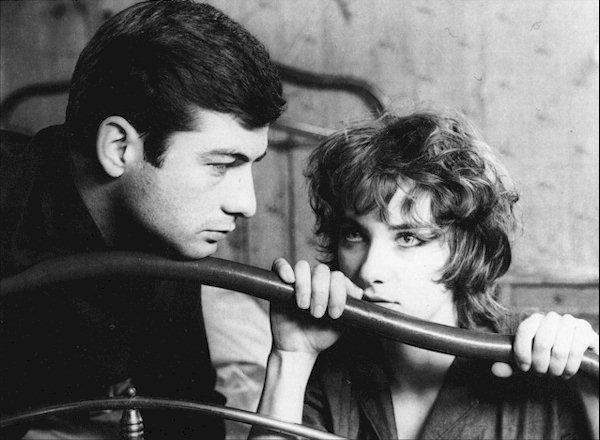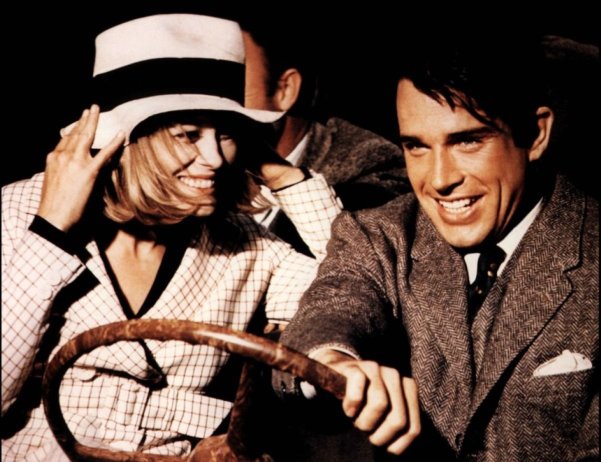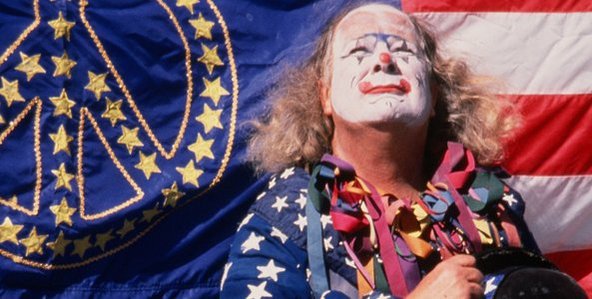
Wavy Gravy will be at the IFC Center for screenings of remarkable documentary on Wednesday and Thursday nights
IFC Center
323 Sixth Ave. at Third St.
December 8-14
212-924-7771
www.ifccenter.com
www.saintmisbehavin.com
 The true message of the sixties never ended for village poet, inspired fool, pied piper, and self-described intuitive clown Hugh Romney, better known as Wavy Gravy. The remarkable life of the longtime peace activist and environmentalist is documented in Michelle Esrick’s wonderful SAINT MISBEHAVIN’: THE WAVY GRAVY MOVIE, which follows Wavy from Greenwich Village to Woodstock to Berkeley to the Third World. From his days performing at the Gaslight, sharing a room with Bob Dylan, participating in the Electric Kool-Aid Acid Test and the Further bus tour, and running the free kitchen at Woodstock to developing the Hog Farm commune, teaching children about peace, love, and understanding at Camp Winnarainbow, and traveling the globe helping restore sight for millions of blind people, Wavy’s life takes him all over the place, but the film never gets lost along the way. Wavy, who has his own Ben & Jerry’s flavor (caramel cashew Brazil nut ice cream with chocolate hazelnut fudge swirl and roasted almonds), spreads humor and compassion everywhere he goes. “Wavy was always trying to take the ordinary and make it into something funny and magical,” explains his wife, Jahanara, who has been by his side for this entire long, strange trip. Among those who share stories about the irrepressible Wavy are Ram Dass and Dr. Larry Brilliant, the two men who cofounded the international health organization SEVA with him, as well as Odetta, Ramblin’ Jack Elliott, Jackson Browne, Bonnie Raitt, Dr. Patch Adams, and Buffy Sainte-Marie, who together paint a colorful portrait of a humble, sweet, bigger-than-life bodhisattva who is just doing what comes naturally, believing that we all have the power to change the world, one small act at a time, reaching for that “carrot of divine life.” Wavy (a doppelganger for the great British actor Peter Ustinov) and Esrick will be at the IFC Center for the 6:25 and 8:30 shows on Wednesday, December 8, and Thursday, December 9, and Ben Cohen and Jerry Greenfield will personally deliver free ice cream at the 8:30 Wednesday screening.
The true message of the sixties never ended for village poet, inspired fool, pied piper, and self-described intuitive clown Hugh Romney, better known as Wavy Gravy. The remarkable life of the longtime peace activist and environmentalist is documented in Michelle Esrick’s wonderful SAINT MISBEHAVIN’: THE WAVY GRAVY MOVIE, which follows Wavy from Greenwich Village to Woodstock to Berkeley to the Third World. From his days performing at the Gaslight, sharing a room with Bob Dylan, participating in the Electric Kool-Aid Acid Test and the Further bus tour, and running the free kitchen at Woodstock to developing the Hog Farm commune, teaching children about peace, love, and understanding at Camp Winnarainbow, and traveling the globe helping restore sight for millions of blind people, Wavy’s life takes him all over the place, but the film never gets lost along the way. Wavy, who has his own Ben & Jerry’s flavor (caramel cashew Brazil nut ice cream with chocolate hazelnut fudge swirl and roasted almonds), spreads humor and compassion everywhere he goes. “Wavy was always trying to take the ordinary and make it into something funny and magical,” explains his wife, Jahanara, who has been by his side for this entire long, strange trip. Among those who share stories about the irrepressible Wavy are Ram Dass and Dr. Larry Brilliant, the two men who cofounded the international health organization SEVA with him, as well as Odetta, Ramblin’ Jack Elliott, Jackson Browne, Bonnie Raitt, Dr. Patch Adams, and Buffy Sainte-Marie, who together paint a colorful portrait of a humble, sweet, bigger-than-life bodhisattva who is just doing what comes naturally, believing that we all have the power to change the world, one small act at a time, reaching for that “carrot of divine life.” Wavy (a doppelganger for the great British actor Peter Ustinov) and Esrick will be at the IFC Center for the 6:25 and 8:30 shows on Wednesday, December 8, and Thursday, December 9, and Ben Cohen and Jerry Greenfield will personally deliver free ice cream at the 8:30 Wednesday screening.

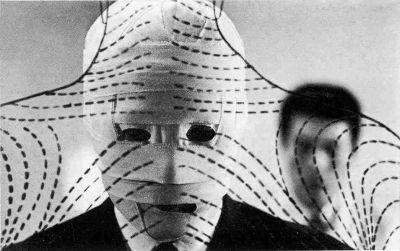
 Japanese novelist Kôbô Abe and director Hiroshi Teshigahara collaborated on five films together, including the marvelously existential WOMAN OF THE DUNES in 1964 and THE FACE OF ANOTHER two years later. In THE FACE OF ANOTHER, Tatsuya Nakadai (THE HUMAN CONDITION, KILL!) stars as Okuyama, a man whose face has virtually disintegrated in a laboratory accident. He spends the first part of the film with his head wrapped in bandages, a la the Invisible Man, as he talks about identity, self-worth, and monsters with his wife (Machiko Kyo), who seems to be growing more and more disinterested in him. Then Okuyama visits a psychiatrist (Mikijirô Hira) who is able to create a new face for him, one that would allow him to go out in public and just become part of the madding crowd again. But his doctor begins to wonder, as does Okuyama, whether the mask has actually taken control of his life, making him as helpless as he was before. Abe’s remarkable novel is one long letter from Okuyama to his wife, filled with utterly brilliant, spectacularly detailed examinations of what defines a person and his or her value in society. Abe wrote the film’s screenplay, which tinkers with the time line and creates more situations in which Okuyama interacts with people; although that makes sense cinematically, much of Okuyama’s interior narrative, the building turmoil inside him, gets lost. Teshigahara once again uses black and white, incorporating odd cuts, zooms, and freeze frames, amid some truly groovy sets, particularly the doctor’s trippy office, and Tōru Takemitsu’s score is ominously groovy as well. As a counterpart to Okuyama, the film also follows a young woman (Miki Irie) with one side of her face severely scarred; she covers it with her hair and is not afraid to be seen in public, while Okuyama must hide behind a mask. But as Abe points out in both the book and the film, everyone hides behind a mask of one kind or another.
Japanese novelist Kôbô Abe and director Hiroshi Teshigahara collaborated on five films together, including the marvelously existential WOMAN OF THE DUNES in 1964 and THE FACE OF ANOTHER two years later. In THE FACE OF ANOTHER, Tatsuya Nakadai (THE HUMAN CONDITION, KILL!) stars as Okuyama, a man whose face has virtually disintegrated in a laboratory accident. He spends the first part of the film with his head wrapped in bandages, a la the Invisible Man, as he talks about identity, self-worth, and monsters with his wife (Machiko Kyo), who seems to be growing more and more disinterested in him. Then Okuyama visits a psychiatrist (Mikijirô Hira) who is able to create a new face for him, one that would allow him to go out in public and just become part of the madding crowd again. But his doctor begins to wonder, as does Okuyama, whether the mask has actually taken control of his life, making him as helpless as he was before. Abe’s remarkable novel is one long letter from Okuyama to his wife, filled with utterly brilliant, spectacularly detailed examinations of what defines a person and his or her value in society. Abe wrote the film’s screenplay, which tinkers with the time line and creates more situations in which Okuyama interacts with people; although that makes sense cinematically, much of Okuyama’s interior narrative, the building turmoil inside him, gets lost. Teshigahara once again uses black and white, incorporating odd cuts, zooms, and freeze frames, amid some truly groovy sets, particularly the doctor’s trippy office, and Tōru Takemitsu’s score is ominously groovy as well. As a counterpart to Okuyama, the film also follows a young woman (Miki Irie) with one side of her face severely scarred; she covers it with her hair and is not afraid to be seen in public, while Okuyama must hide behind a mask. But as Abe points out in both the book and the film, everyone hides behind a mask of one kind or another. 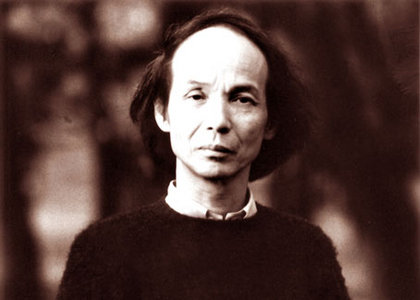
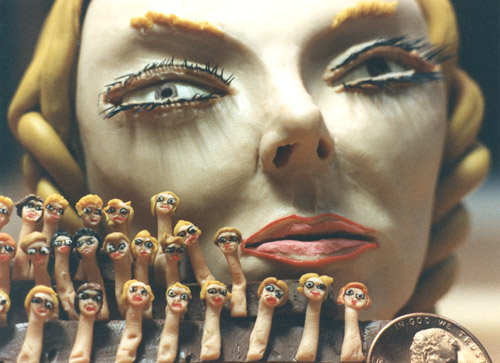
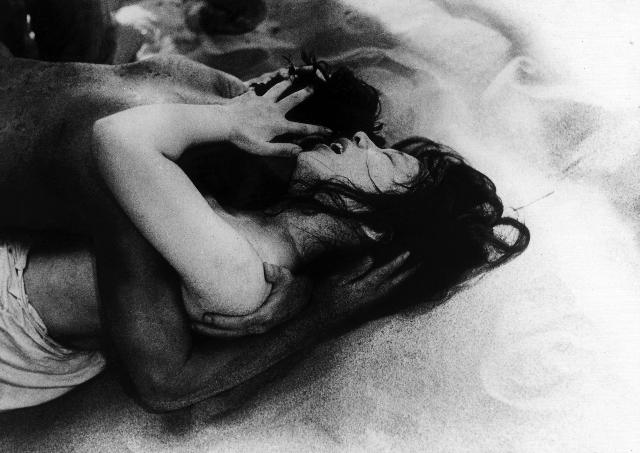
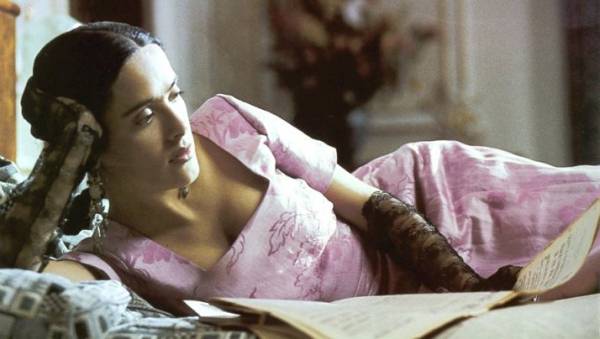
 Salma Hayek is terrific as Mexican artist Frida Kahlo in this uniquely creative biopic from Julie Taymor. Kahlo’s tumultuous twenty-five-year relationship with muralist and communist Diego Rivera (Alfred Molina) is the centerpiece of the film, which comes alive with bright colors, Elliot Goldenthal’s Oscar-winning score, splendidly bizarre animation from the Brothers Quay, and a fun group of supporting actors that includes Antonio Banderas, Ashley Judd, Valeria Golino, Edward Norton, and Geoffrey Rush as Leon Trotsky. Kahlo documented her difficult life on canvas, and Taymor uses those paintings in engaging and dramatic ways.
Salma Hayek is terrific as Mexican artist Frida Kahlo in this uniquely creative biopic from Julie Taymor. Kahlo’s tumultuous twenty-five-year relationship with muralist and communist Diego Rivera (Alfred Molina) is the centerpiece of the film, which comes alive with bright colors, Elliot Goldenthal’s Oscar-winning score, splendidly bizarre animation from the Brothers Quay, and a fun group of supporting actors that includes Antonio Banderas, Ashley Judd, Valeria Golino, Edward Norton, and Geoffrey Rush as Leon Trotsky. Kahlo documented her difficult life on canvas, and Taymor uses those paintings in engaging and dramatic ways. 